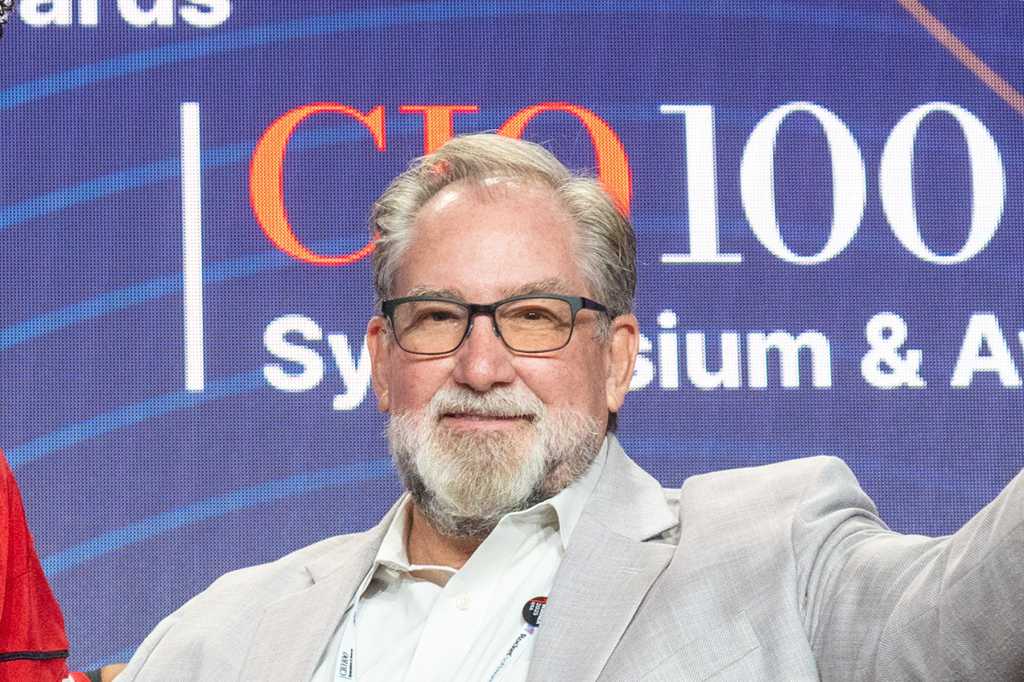In rural Northern California, technology and innovation play a more significant role in healthcare than ever. Enloe Health in particular has faced challenges from natural disasters to workforce shortages, and CIO Tom Osteen has adopted AI to benefit clinicians and patients, while a culture of collaboration keeps systems cost-effective and secure.

Enloe Health, a nonprofit health provider based in Chico, California, relies on IT to not only improve operational efficiency, but provide care to patients within its vast geographic area. The organization operates Enloe Health Enloe Medical Center, a 264-bed Level II Trauma Center, a helicopter ambulance service, and a wide array of medical services. And following the deadly Camp Fire of 2018, Enloe has faced increased demand for its services following the loss of a major hospital in nearby Paradise.
Opportunities, not challenges
Chico is located 90 miles from Sacramento, making recruitment occasionally difficult for CIO Tom Osteen. “We’re like an island population, as we’re not within commuting distance from the bigger cities,” he says. “Once we get people, though, they like Chico and want to stay.”
Osteen and Enloe Health, a 2025 CIO 100 winner, see technology as central to how it mitigates risk, and serves its patients. “IT is at the intersection of business operations and patient care, so we have a keystone spot to drive operational efficiency, whether it involves making tasks less labor intensive, or adding capacity to provide more care, which can drive revenue,” he says.
Artificial intelligence is especially a hot topic in global healthcare, and is an area where Enloe has been able to increase efficiencies and remove some burden from its clinicians.
“We’ve introduced ambient listening technology into the patient examination rooms so physicians can record their interactions, and have them automatically transcribed into medical notes, saving a tremendous amount of time and effort,” he says. Abridge, a San Francisco startup, provides Enloe with an app that’s integrated into the healthcare provider’s Epic electronic medical record (EMR) system, which is, in effect, Enloe’s enterprise technology backbone.
“That time savings translates directly to happy physicians, and indirectly to more visits that they can accommodate, all of which means more revenue,” he says. “It’s a perfect example of how technology drives efficiency in workflows that result in satisfaction for the provider.” He adds they have the potential to increase by thousands of clinical visits a year after fully deploying Abridge. “If each physician can pick up two or three more patients each day they can care for, it adds up quickly,” he says.
Punching above their weight
Efficiencies like this are vital to healthcare providers like Enloe that don’t have the scale of multiple hospitals, but need to use the latest technology and medical processes that patients expect. “For mid-sized providers like Enloe, we’re in the big leagues of needing systems like Epic, top-level cyber security, and HR tools, but we can’t spread that cost to eight or 10 hospitals, so we don’t get the scale benefits as broadly,” he says.
The integration of the Abridge AI tool demonstrates the new role CIOs and IT play in organizations. There was the typical technology integration to connect Abridge with Epic, but more importantly was the cultural change that was needed. “We equipped our physicians with language about how to navigate conversations with patients regarding the use of the new AI technology in the clinical setting,” says Osteen.
The Epic electronic health records system is the core platform for Enloe and many health providers across the country. Its selection took place just before Osteen joined in 2017, and was chosen by a multidisciplinary team of physicians, nurses, and technologists. Enloe has largely kept the platform in an out-of-the-box standard format. “We do our best every day to keep it vanilla,” Osteen adds. “The more regular you keep Epic, the less it costs to maintain.”
Enloe Health utilizes the cloud hosting offered by Epic, but an in-house team carries out all software maintenance. “That’s a big nut to crack,” says Osteen of this decision. “Half of my 180-person IT team is dedicated to supporting Epic, so it’s a lot of work,” he adds. “But I’m continually impressed with what they do to keep it humming and optimized. It gives us local control. The more you outsource, the less connection you have to the inner workings of the software, and the organization doesn’t want to give that up. Keeping ownership provides the flexibility and agility you need in today’s healthcare environment.”
Keeping cyber threats in check
Back in 2020 during the Covid-19 pandemic, Enloe Health suffered a cyber attack. Such attacks increased during that time and haven’t decreased since. Back then, Enloe had to go into downtime procedures, and Osteen says the recovery was a significant effort for the technology team. Fortunately, no breach of patient data occurred, and the incident triggered what he calls a maturity of the cybersecurity approach. “We used it as an inflection point to take our cybersecurity to the next level,” he says. This included signing deals with Palo Alto Networks to provide a round-the-clock security operations center, and a recent deal with Clearwater adds a virtual CISO to defenses. “It’s almost impossible in the current staffing and threat environment to maintain a fully in-house cyber team,” Osteen says of the benefit of these partnerships.
The events of 2020 also helped reshape the understanding and culture toward cybersecurity. “There’s a strong in-house focus on cyber awareness,” he says. “The staff do extremely well in external phishing tests, so they’re an extension of the cyber team.”
This is critical since while the threats haven’t increased in number, those responsible are getting more creative about the damage they can cause if they manage to get in.
Putting culture in control
The value of having the right culture within the organization can never be underestimated in order to maximize the potential of technology. That culture is both within IT and across Enloe Health. “We make intentional efforts with our IT team to build and sustain a specific culture, and that’s as important as the technology,” Osteen says. “You have to have trust, confidence, and a high courage environment because if you’re going to take some risks, you need a culture that supports some intelligent risk taking.”
That culture, developed and championed by Osteen, ensures IT is embedded into the operations of Enloe and the fabric of care delivery, whether it’s members of IT going on hospital rounds with clinicians or being in cross-functional meetings. “It keeps us close to the day-to-day needs of the organization,” he says.








